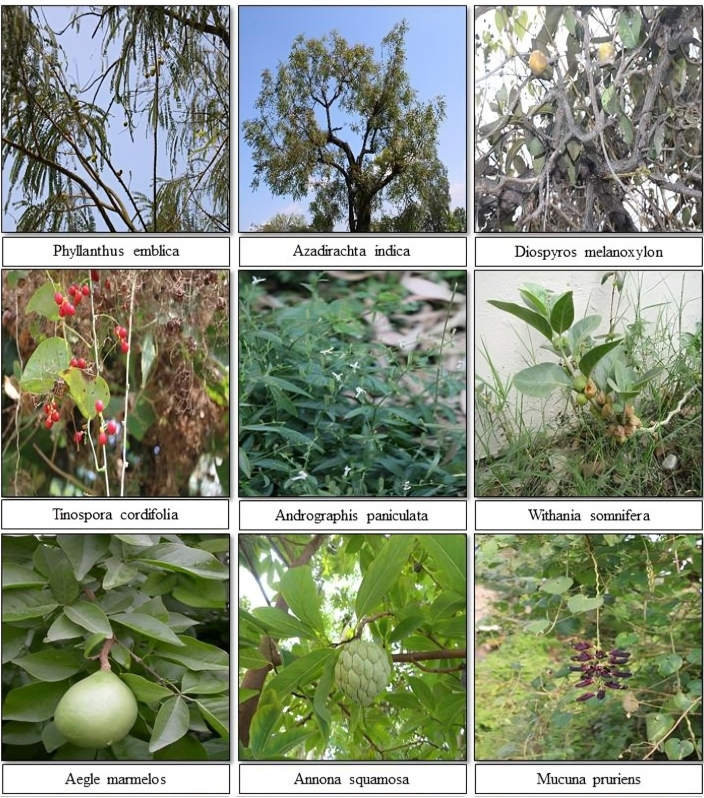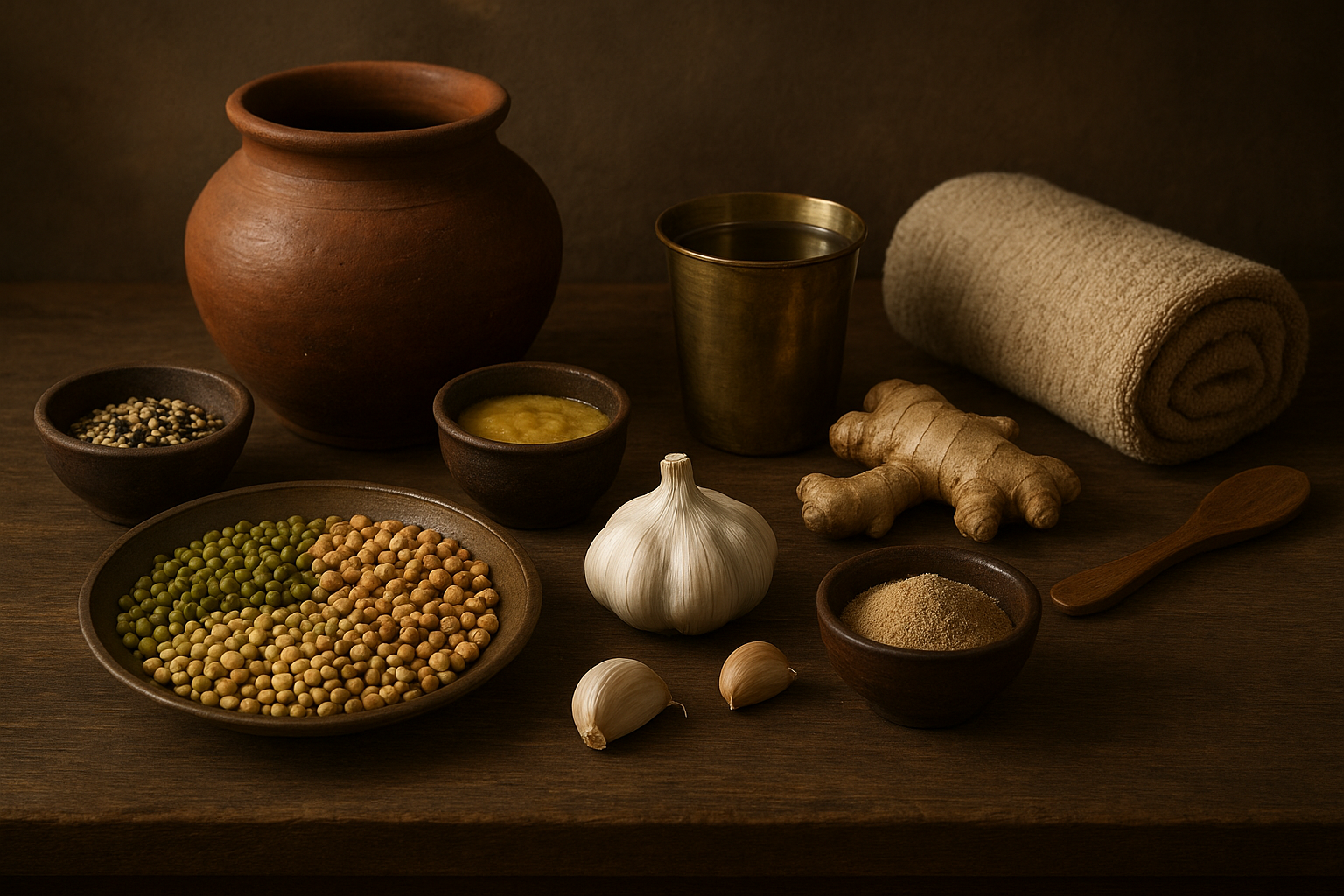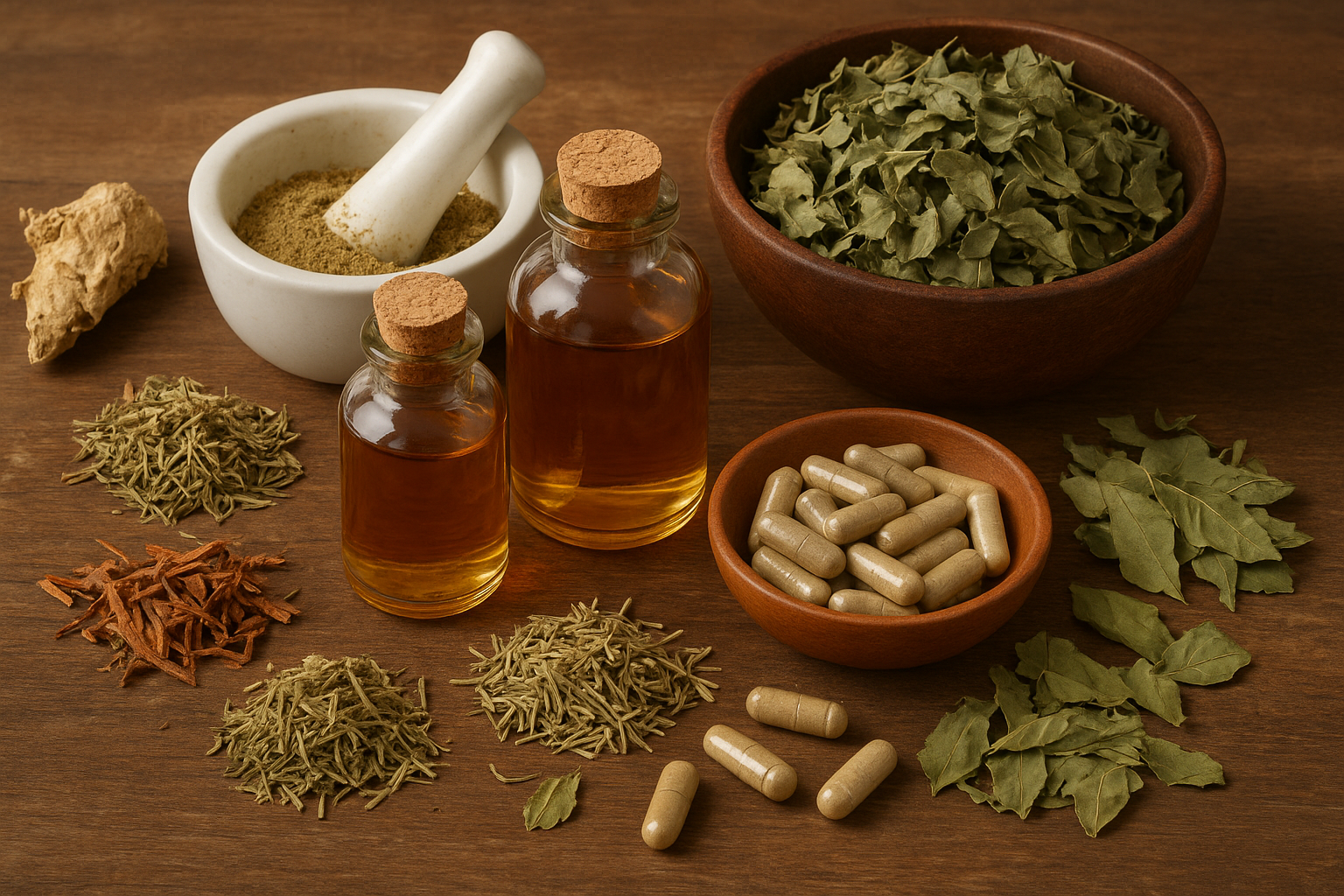Empowering Local Communities Through Minor Forest Produce in Madhya Pradesh: A Path to Sustainable Livelihoods and Conservation
Madhya Pradesh, often referred to as the “heart of India,” boasts an extensive forest cover that accounts for over 25% of its geographical area. The state houses a significant portion of India’s biodiversity and is particularly known for its Minor Forest Products (MFPs), which include a variety of medicinal plants used traditionally and commercially. MFPs refer to forest-derived resources other than timber, such as fruits, seeds, bark, leaves, roots, gums, resins, and flowers. Many of these products have been integral part of traditional medicine systems, including Ayurveda, Siddha, and Unani. Minor Forest Produce (MFP) plays a pivotal role in the socio-economic upliftment of these communities by providing livelihood opportunities, fostering sustainable development, and preserving traditional knowledge systems.This article explores some of the significant medicinal plants found in Madhya Pradesh and their role in the state’s forest economy. Moreover, while popular species like Amla, Tendu, Mahuaand Neem have dominated the market, lesser-known species such as Kalmegh, Gokhru, Safed Musli, and Shatavarican also be explored for similar purposes.
MINOR FOREST PRODUCE: A VITAL RESOURCE
Minor Forest Produce includes non-timber forest products (NTFP) such as fruits, seeds, leaves, roots, bark, flowers, and honey, as well as medicinal plants. In Madhya Pradesh, MFP forms a crucial component of the forest economy, particularly for the tribal population, which constitutes over 20% of the state’s population. Key MFPs collected in the region include mahua flowers (Madhucalongifolia), tendu leaves (Diospyrosmelanoxylon), sal seeds (Shorearobusta), and lac (produced by lac insects). Madhya Pradesh’s state policies, under the aegis of the Madhya Pradesh State Minor Forest Produce Federation (MPSMFPF), have focused on empowering local communities by providing them with fair prices, facilitating market access, and promoting value addition to MFPs. The Minimum Support Price (MSP) scheme ensures economic stability for forest dwellers, reducing their dependence on exploitative middlemen.
EMPOWERING LOCAL COMMUNITIES
The collection and processing of Minor Forest Produce (MFP) in Madhya Pradesh provide livelihood for thousands, with training in sustainable techniques maximizing yields. Value addition, like tamarind pulp and honey packaging, boosts income and creates jobs, especially for women and tribal peoples. Additionally, preserving and integrating traditional knowledge on medicinal plants ensures sustainable resource use while blending traditional practices with modern science.
ROLE OF MEDICINAL PLANTS IN LIVELIHOOD GENERATION
Apart from widely known MFPs, Madhya Pradesh’s forests are rich in medicinal plants that have significant therapeutic value and economic potential. Some of the less-publicized medicinal plants in the region include:
1. Phyllanthusemblical(Amla)
- Parts used: fruits, leaves, stem, and roots
- Medicinal Uses: used in Herbal medicine for its antioxidant and immune-boosting properties
- Economic importance: processed foods (juices, murabba, pickles, candies, jams), nutraceuticals (powder, capsules, Triphala, Chyawanprash), cosmetics (hair oils, skincare products), agro-industrial applications (seed oil, dyes, tannins)
- Potential: frequent uses in herbal medicine as in formulations such as Triphala and Chyawanprash, may promote rural entrepreneurship and expanding domestic and export market. Commercial value of Amla in both domestic and international markets.
2. Azadirachtaindica A.Juss. (Neem)
- Parts used: leaves, bark, and seeds
- Medicinal Uses: Neem has numerous medicinal and pesticidal properties and is widely used in traditional medicine.
- Economic importance: used for making various products such as neem oil, neem soap, and biopesticides.
- Potential: various products of this plant are in demand, both in the health and agriculture sector
3. Diospyrosmelanoxylon Roxb. (Tendu)
- Parts used: leaves
- Medicinal Uses: used to make medicines
- Economic importance: Leaves are traditionally used for rolling tobacco known as beedi (local cigarettes)
- Potential: Valorization of leaves for eco-friendly packaging and fruits for health food products.
4. Tinosporacordifolia(Willd.) Hook.f. & Thomson(Guduchi)
- Parts used: Stem Medicinal
- Uses: known for its immune-boosting propertiessoused in traditional medicine to treat various ailments.
- Economic importance: used in making health tonic and supplement.
- Potential: increasingly being recognized for its commercial potential.
5. Andrographispaniculata (Burm.f.) Wall. ex Nees (Kalmegh)
- Parts used: aerial parts, roots and whole plant
- Medicinal Uses: used in the production of herbal medicines, teas, and supplements.
- Economic importance: used by the industries for herbal health product market
- Potential: it is potential in making herbal medicines.
6. Withaniasomnifera (L.) Dunal (Ashwagandha)
- Parts used: leaves, flowers, bark, stemand specially the roots
- Medicinal Uses: used in Herbal medicines and supplements.
- Economic importance: used by the industries for herbal health product in the form of food supplements and immunity booster products
- Potential: It has significant commercial potential due to its stress-reducing and health benefits.
7. Aegle marmelos (L.) Corrêa(Bael)
- Parts used: fruits and bark
- Medicinal Uses: used in treatment of asthma, diarrhea, and other conditions
- Economic importance: used in the preparation of summer drinks also used in the preparation of salads in houses.
- Potential: can used in herbal medicine to treat swelling, and to overcome sunstrokes.
8. Annona squamosa L. (Sitaphal)
- Parts used: fruits and seeds
- Medicinal Uses: used to treat cardiac disease, controls blood pressure and helps to fight skin and hair related problems.
- Economic importance: used in preparing custard apple ice cream, sitafal shake, cosmetic products and as an organic pesticide
- Potential: high nutraceutical potential for medical food.
9. Mucunapruriens (L.) DC. (Kenwachh)
- Parts used: whole plant
- Medicinal Uses: Parkinson’s disease, seeds in male infertility, nervous disorders, dysentery, diarrhea, snakebite, cancer, diabetes, dysmenorrheal, delirium, gout, sterility, gonorrhea, muscular pain, rheumatic disorder, impotence, tuberculosis, cough, blood purifier, diuretic, uterine stimulant.
- Economic importance: The high demand for L-DOPA in pharmaceuticals ensures a lucrative market for seed collectors.
- Potential: Used in preparation of various herbal drugs in Ayurveda, Unani, and Siddha systems of medicine, to treat various ailments.
10. Gymnemasylvestre (Retz.) R.Br. ex Sm. (Gudmar)
- Parts used: leaves
- Medicinal Uses: the dried leaves and extracts have been used to treat eye diseases, allergies, constipation, cough, dental caries, obesity, stomach ailments, and viral infections
- Economic importance: used as lozenges, mouthwash, or tea diminishes the sugar level. Also used by modern and herbal drug industries.
- Potential: powder used as a destroyer of glycosuria, and is believed to neutralize the excess sugar present in the body.
11. Chlorophytumborivilianum Santapau & R.R.Fern. (Safed Musli)
- Parts used: tuberous roots
- Medicinal Uses: being promoted as anaphrodisiac, adaptogenic, and immunomodulatory herb, since over the centuries in traditional medicine.
- Economic importance: Its tuberous roots have high market demand, offering significant economic potential for pharmaceutical industries and export markets.
- Potential: cultivation of Safed Musli provides a lucrative income source for farmers, promoting sustainable agriculture and rural development.
12. Gloriosasuperba L. (Karihari, Visalya)
- Parts used: root, tuber and leaves while, the major constituents were rhizomes and seeds
- Medicinal Uses: used as a tonic, anti-periodic, anti- helminthic and also againstgout, snake bites, and scorpion stings.
- Economical: is of high economic value in the pharmaceutical industry for colchicine extraction
- Potential: it serves as a source of income for rural and tribal collectors.
13. Abrusprecatorius L. (Gungchi)
- Parts used: seeds
- Medicinal Uses: used for the treatment of various ailments such as, bronchitis, jaundice, hepatitis, contraception, tumor, abortion, malaria, skin disease, etc.
- Economical: Moreover, cultivated as an ornamental plant and is used to make jewelry (rosaries) and toys for children.
- Potential: seeds contain a toxic protein known as abrinin herbal formulations.


14. Abutilon indicum (L.) Sweet (Kanghi)
- Parts used: whole plant
- Medicinal Uses: used in facial paralysis and joint disorders, used in toothache and tender gums. Demulcents of leaves are locally applied to boils and ulcers. Also indicated as a uterine tonic as well as an aphrodisiac mentioned in Ayurveda.
- Economical: used by pharmaceutical companies to make medicines and found utility in agriculture as well, serving as a green manure and aiding in soil improvement.
- Potential: as a source of natural fibers for textiles.
15. Vachellianilotica subsp. indica (Benth.) Kyal. & Boatwr. (Babool, Bamur)
- Parts used: bark, root, gum, leaves, pods and seeds
- Medicinal Uses: It is useful for treatment of venereal diseases, nausea, burns and wounds, stomachache and diarrhea.
- Economical: used by the textile industry as a dyeing and finishing agent. Also in manufacturing of many goods and as sweeteners by the bakeries.
- Potential: extensively used as a browse, timber and firewood species. Also have various pharmacological properties and therapeutic uses.
Government Initiatives and Support in Madhya Pradesh
Despite its potential, the MFP sector in Madhya Pradesh faces challenges such as inadequate infrastructure, limited market access, and the impacts of climate change.To address these, the M.P.Government has launched key initiatives to empower local communities and promote sustainable use of Minor Forest Produce (MFP):
- State Medicinal Plant Board (SMPB): Supports sustainable harvesting and cultivation of medicinal plants while conserving biodiversity with community involvement.
- Van DhanVikas Kendra (VDVK): Focuses on MFP collection, processing, and marketing by tribal communities, offering training and creating employment.
- MFP Federation & Livelihood Support: Links tribal collectors to local and national markets, ensuring fair prices and providing financial support for sustainable practices.
- Medicinal Plant Conservation Areas (MPCA): Conserves medicinal plant biodiversity with local participation to preserve traditional knowledge.
Conclusion
The forests of Madhya Pradesh, rich in biodiversity, hold immense potential to empower local communities through the sustainable management and utilization of Minor Forest Produce. By focusing on medicinal plants alongside other MFPs, the state can ensure the socio-economic upliftment of its tribal and forest-dependent populations while conserving its ecological heritage. Through a synergistic approach involving policy frameworks, community participation, and technological advancements, the potential of MFPs as a tool for rural empowerment can be fully realized. Additionally, promoting research on lesser-known medicinal plants can unlock their commercial potential, while fostering public-private partnerships can help establish processing units and improve market access.












